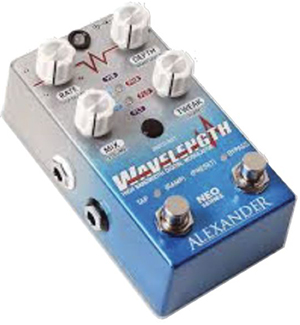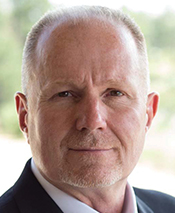Reflecting On the Past
By John Williams
In looking back over the last decade we have become masters of fabricating capacity. Through necessity we learned to become more efficient when it comes to squeezing capacity out of the existing spectrum. We have been able to consistently increase our service offering to meet the insatiable demand of the customer by leveraging technology. In North America operators have accomplished this through different tactics: Most migrated to all-digital, thus removing the old inefficient analog TV signals; a few deployed switched digital video and MPEG-4 to improve video delivery; some migrated from DOCSIS 3.0 to 3.1 to leverage higher modulation orders and some have done it all. Whatever the tactic used, we as an industry have become more spectrally efficient in how we deliver our services.
However, questions seem to be coming up frequently among different operators about what, if anything, we should do now, with the HFC network while we wait for the evolution of extended spectrum DOCSIS (ESD), part of the new DOCSIS 4.0 specification.
Houston, is there a problem?
Most systems have been upgraded at some point to between 550 MHz and 870 MHz, with an occasional 1 GHz upper frequency limit, which had a primary focus for downstream bandwidth expansion. If you look at all the tactics available for better spectral efficiency you may think we are in pretty good shape to continue to deliver more, right? Well, if you read Mr. Hranac’s article in the Spring 2020 issue of Broadband Library on “Understanding Band Splits in a Two-Way Network” you will realize that many operators in the Americas utilize a 5-40/42 MHz upstream for the return path. It is the upstream that is creating the questions of what to do next. Some operators will tell you that nearly 100% of the node segmentations performed today are driven by upstream congestion, and while there are tactics similar to downstream de-congestion that include migrating to higher modulation orders available with DOCSIS 3.1’s OFDMA, it still does not change the fact that there is only about 35 MHz to 37 MHz of total return spectrum, and some of that spectrum may be questionable as to how usable it really is.
Now that most have begun to embrace the fact that HFC is going to be around for a very long time, cable operators are looking at what we can do to keep moving towards the path to 10G. This begins with the big question around “should we do something to expand the upstream capacity and when?” Most recently with the COVID-19 pandemic we saw increased numbers of people working from home using video conferencing and real time communications on a daily basis. The reports showed that while we were capable of handling the increase in upstream traffic due to this event, it does highlight the need to be prepared for future unknowns. With these types of increased-usage events, coupled with the increase in cloud-based security cameras, we are now asking the question of what to do next.

Changing the split
In the Americas, there is a mid-split (85/108 MHz) or high-split (204/258 MHz) option available that operators are contemplating that can be implemented today. When considering a new upstream split there are similar challenges that do come along with change, regardless of which option you implement. Most notably it typically requires replacing amplifiers. You will also notice that the guard band allocation between the split gets larger as you go higher in frequency. While no one wants to allocate a larger chunk of unusable spectrum, it can be offset a bit by the fact that you are typically extending the top frequency to 1.0 GHz or 1.2 GHz at the same time. Two other things to consider when planning bandwidth changes are defining what you are trying to accomplish and what are the specific considerations to your market. For example, knowing how many active legacy video devices that still require a legacy out-of-band (OOB) signal is an important factor in the decision.
Comparing mid-split versus high-split options
Mid-split (5-85/108 MHz) — With the understanding that every amplifier gets replaced, this can still be considered the easiest path because legacy OOB signaling for non-DSG video set-tops, digital transport adaptors (DTAs) and those few CableCARDs that still exist can be maintained. Depending on your current spectrum availability, it may be possible to move the content currently allocated between 54 MHz and 108 MHz to a new portion spectrum in support of a one-step approach. If spectrum is not available, this creates the need to increase the downstream spectrum’s upper frequency limit, likely to 1.0 GHz or 1.2 GHz so content can be moved up above 108 MHz. Unfortunately, you will need to return to each amplifier to swap the diplex filters and equalizer to support a new 204 MHz or higher split to accommodate the next speed increase. Obviously, if this two-step process can be avoided it will save a lot of time and money. There will be some risk of a mid-split cable modem saturating the front-end tuner in a nearby set-top designed to receive 54 MHz to 860 or 999 MHz depending on the model. With a modem transmitting a higher bandwidth — up to 85 MHz, and possibly at a high transmit level, video impairments may be created for your customer and possibly their neighbor(s).
High-split (5-204/258 MHz) — As with the mid-split option you will need to replace all the amplifiers in the network, and since most legacy OOB set-tops have telemetry that only tunes up to 130 MHz you will now need to solve for how to either support, or eliminate them. There are some cable operators that are looking into amplifiers that can possibly maintain the OOB, but there will be a trade-off of a loss of valuable spectrum and possibly increased complexity for those who design and maintain it. If the majority of video set-tops in your system are DSG enabled it will minimize your risks and reliance on the legacy OOB telemetry carrier. As with the mid-split option you will need to relocate even more frequencies from 54 MHz to 258 MHz; the latter will be the new lower edge of the downstream. If you cannot accommodate this you will need to consider the two-step method as noted previously. With this high-split option, the risk of saturating video set-tops is increased due to the increase in the modems’ upstream spectral range of 54 MHz to 204 MHz, which can now generate enough energy to possibly create impairments in the video service. Some current thoughts to mitigate this risk could be using a filter to block the modem signals from feeding back into the video set-tops, or possibly migrating at-risk homes to an all-IP delivered service, similar to FTTH PON where the ONU in the home is responsible for the delivery of all services.
The last obstacle to overcome related to a high-split option is RF signal leakage detection. Currently we generate a signal in or near the downstream frequency range of 108 MHz to 137 MHz to enable our technicians to detect and mitigate leakage using equipment which ensures we are able to comply with applicable requirements in Part 76 of the FCC’s Rules. Well, in a high-split architecture that frequency is now in the upstream path so cable operators are working with silicon vendors and leakage equipment manufacturers on new methods that will allow us to continue to monitor for signal leakage in most of the operating band.

A summary ending with more questions than answers
What we know is that we have become masters of bandwidth efficiency when it comes to optimizing spectrum usage. We know that our two-way HFC networks with a sub-split upstream have enabled us to grow our business in ways no one could have ever imagined, and we know we are able to continue to upgrade our plant designs to keep up with the increased demand for delivering higher bandwidths that was unthinkable 40 years ago. So for some, a mid-split may be the right answer; for others a high-split option is worth the extra effort. Understanding your own technical challenges and what it will take to evolve bandwidth over HFC for the next 40 years is up to you. There are many decisions on the table, so it comes down to what do you want to do and how quickly do you want to do it.
 John Williams
John Williams
VP, Engineering & Architecture,
Charter Communications
John Williams is the VP, Engineering & Architecture for Charter’s Infrastructure Architecture & Engineering group in Englewood, Colorado. He is responsible for leading a team that develops new technology solutions that are reliable, simple and cost effective for the outside plant and the company’s commercial enterprise business. John has held leadership roles in technical operations, engineering operations and network management in various capacities throughout his 30+ year career. He joined Charter in 2006 as Director of Engineering, moving to Advanced Engineering in 2013, where he was appointed to his current position in 2016.



